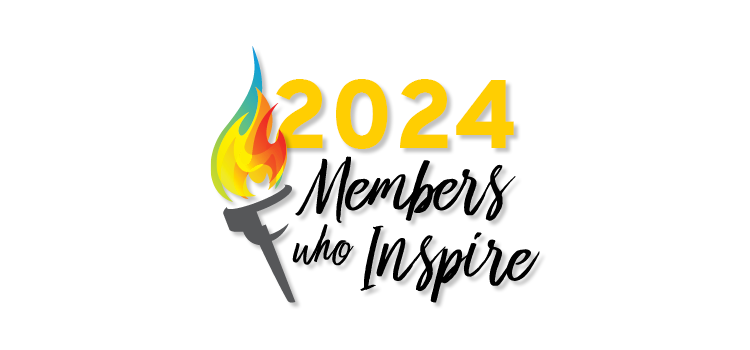Mindfulness plays role in educating lawyers to confront racism

Rhonda Magee. Photograph Courtesy of University of San Francisco School of Law.
As a woman of color, my ordinary fatigue is exacerbated by the additional stress of the ugly signs that old-fashioned racism is on the rise in America.
And there is an added weight lately. In my day job, I’ve taken on the challenge of helping law students learn to address issues of race and law more effectively.
It’s a job I thoroughly enjoy. But I wonder why there isn’t more focus and attention on these issues. They wonder, too.
Take a typical day: I was sitting in a circle with 15 students in my “Introduction to Race Law: Policy, Professionalism & Practices” class. It’s a group of mostly first-year students from a range of backgrounds—white, black, Latino, Asian and a variety of combinations of these. We meet twice a week and strive for something approaching multiracial truth. On this path, I guide my students to develop and deepen their capacity to analyze and discuss intersections between race and law.
It’s fair to say my race-law students are unsettled. Our topics can be plucked from the headlines. As I write this, those topics are way too plentiful: Horrific shootings in Baton Rouge, Dallas, Minneapolis, Orlando. Implicit and explicit bias in policing and sentencing people of color. A shockingly light sentence for sexual assault by a white student caught in the act. Community distrust of authority. The tenor of the presidential campaign.
Race matters. Social identities matter. Yet my students tell me most of their law school classes ignore these topics. Their course materials don’t include meaningful explanations of the ways that our history of racism, white supremacy and gender bias has helped shape law and policy over time. They’re not being asked to consider ways that issues of race and other social identities intersect with the application of the law today.
For these students, the absence of thorough treatment of these issues is troubling. For some of them, this systematic failure to address an obviously relevant aspect of law in our lives makes them angry. Many of them feel that their own experiences—what they know about how race still matters, what they’ve learned from interacting in their social groups over the years—are somehow systematically ignored in the course of learning about how law impacts people and groups differently. What they are learning seems to leave them feeling disengaged from the realities of their everyday lives.
It doesn’t have to be this way. There have long been calls for more effective ways of addressing race in legal education. It’s a staple of the area of legal scholarship known as critical race theory. For a recent class, we read the groundbreaking but underappreciated 2008 article “Teaching Race/Teaching Whiteness: Transforming Colorblindness to Color Insight,” by Santa Clara University professors Stephanie Wildman and Margalynne Armstrong. The article makes the case for legal education that systematically teaches about race and, in particular, about the largely invisible racial dynamics of whiteness and white privilege—one that moves away from colorblindness to what the authors call color insight.
My students read the piece carefully, though not without criticism. Still, by and large, they come away with more questions about why traditional law and legal education have not done a better job of helping lawyers deal more effectively with the ongoing issues of race in America.
I wish I had a good answer. It’s certainly possible to facilitate conversations among a group of law students from varying backgrounds. But it isn’t easy.
Accepting anger for what it is
Emotions can run high on hot-button issues.
Here’s where a contemplative approach can help. I find that incorporating contemplative practices into conversations can make all the difference. That’s not to say there isn’t pushback.
One student recently pressed me to explain how I can talk with compassion about engaging people who have demonstrated, at a minimum, an indifference to racism.
I tell her I can understand her confusion, her anger. I experience anger, too. Yet for me, anger can be experienced and accepted for what it is. It’s often a signal that a deep value has been violated. And that realization can lead me to better responses.
Another student tells me that, in his view, “sometimes you have to call people out, especially when they are being racist.” I nod. In extreme cases, this may be so. But we can’t always give in to those temptations.
To better communicate and relate to those around us, we need to find ways to pause, reflect and respond—rather than simply react. That may be more effective for keeping the conversation going and expanding understanding. Rather than calling people out, I suggest: What if we try to call them in—into more nuanced and compassionate conversations about ways of addressing these issues more effectively together? It may not always work, but we can certainly try; and in a divided world, we’d be better off for it.
“It’s important to meet people where they are and to realize that if people are struggling with their own material needs, it makes it all the more difficult to work on this issue across lines of difference,” I tell another student, one struggling to imagine ways of bringing these issues into spaces where people may be preoccupied with their own sense of disadvantage.
As we speak, the student’s eyes well with tears. I ask her what is coming up. “I’m just so grateful to have this class … and just to know that I’m not alone.”
She’s certainly not alone. All of us are grappling with these issues. But are you responding or reacting? Are you thinking through your approach? Are you helping your clients respond rather than react?
The late ABA Journal editor Steve Keeva, through his book, Transforming Practices, suggests that law may be experienced as a healing profession. University of Florida professor Len Riskin makes a similar case in his 2007 essay “The Place of Mindfulness in Healing and the Law.”
It’s a notion far too few lawyers consider. Yet if you begin to explore a healing approach to the practice of law, you just may see benefits in your work with clients, in communities divided by racial incidents, and even in your personal life.
STRUGGLING AND HEALING TOGETHER
The practices and teachings I share with my students, colleagues and lawyers in various settings give me hope and even joy. Yes, the work leaves me exhausted most evenings—mentally, physically and spiritually—signs that our legal and political institutions have not done enough to assist any of us in understanding contemporary racism and other forms of bias—and actually minimizing them. But the effort to increase skillfulness in working with these issues forthrightly is also a solace. We are struggling together. And in that struggle, we are creating the capacity to do better next time by our colleagues, our clients, our neighbors. We are living our way into the future we’d like our children to see.
Because of the personal toll of regularly dealing with these issues so intimately, a daily mindfulness practice—sitting on a cushion or in a chair for 10 to 20 minutes, day after day, focusing on the sensations of breathing and of being alive with a loving heart—has sustained me. Indeed, research shows how such practices support the effective performance of those of us who may be the targets of racism, in addition to assisting each of us in dealing with and minimizing our own biases. These personal practices must be expanded to include interpersonal and systemic efforts to address racism in its various, contemporary forms. Combining mindfulness with anti-racist work—what I call “ColorInsight Practice”—may be the key to forming lawyers and leaders who will transform the deep structures of inequality and do the everyday work of bringing about racial justice. Let us begin together, one mindful conversation at a time.
This article originally appeared in the August 2016 issue of the ABA Journal with this headline: “Reacting to Racism: Mindfulness has a role in educating lawyers to address ongoing issues.”
Sidebar
A ColorInsight Exercise
Mindfulness-based “ColorInsight Practices” combine personal, interpersonal and systemic efforts to bring awareness to race and other forms of social-identity-based bias in our lives. We bring attention to these aspects of our lives with as much compassion for ourselves and for others as we can muster—and with the conviction that real change is possible. Here’s a practice for you to try:
Sit in silence for a few minutes, bringing attention to the body and breath. Think back on your life experiences over the past 24 hours with nonjudgmental awareness. Reflect on the settings in which you have moved, including to, from and during work. What races do you typically encounter? In what roles? Do some groups predominate as among the powerful or the powerless? Take a few minutes to write in a journal about what you know, including the habits or conditioning you may have around acknowledging or avoiding this aspect of your own life experience. Notice not only the thoughts but also emotions and physical sensations that arise as you seek to turn more forthrightly to this aspect of your own life. Consider developing an intention of gently bringing mindful awareness to these aspects of your life, inviting the will to work with this dimension of your experience with greater compassion, courage and curiosity in the coming week.



